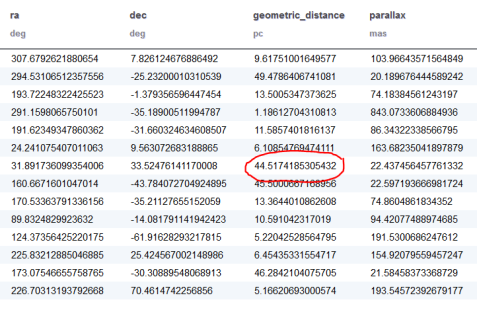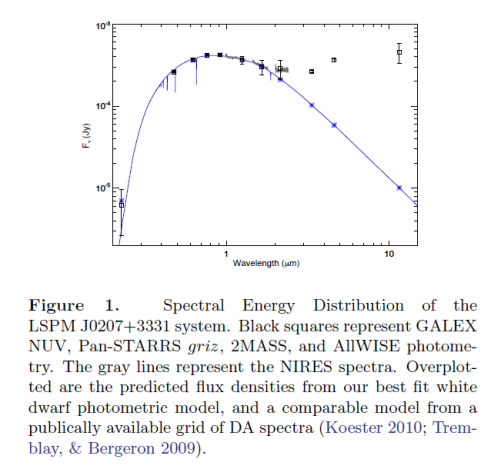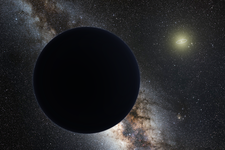Hi Everyone!
We’ve been so busy following up your discoveries that we have fallen behind in our blogging. Here’s a long overdue update on the project.
First some numbers. You have now performed more than 6 million classifications! That’s right; please ignore the “Backyard Worlds: Planet 9 Statistics” link on the Backyard Worlds main page. That only shows you a few months’ worth of classifications. The total number of classifications since we launched is much bigger.
You have submitted 32,810 sources via the Think-You’ve-Got-One form(s). Adam Schneider has done one pass through this list to confirm these sources, check for objects that have not been previously published, and check for duplicates. We also have a group of superusers separately working their way through this list to look for new solar system planets (e.g. planet nine). We haven’t discovered a planet yet, but we are getting familiar with the variety of false positives that we need to understand, and there is still at least 2/3 of the sky left to search in this mode.
These submissions boil down to 1305 objects that are on our follow-up list: mostly brown dwarf candidates. These objects feed what has become a vast follow-up program with telescopes in the north (Keck, Apache Point Observatory, IRTF, Mont Megantic), the south (Magellan, Gemini, SOAR) and in space (Hubble and Spitzer). Of these candidates, we have confirmed and classified 70 T dwarfs and 61 L dwarfs by taking their spectra and comparing them against spectra of known brown dwarfs, for a total of 131 spectroscopically confirmed brown dwarf discoveries. And that doesn’t include our most recent Magellan run, which took place over July 4 weekend.
The T dwarfs and L dwarfs teach us about brown dwarf demographics and formation processes when they are nearby, and indeed 55 of our brown dwarfs and brown dwarf candidates are within a distance of 20 parsecs from the Sun. This group also contains exotic objects such as co-movers, and color outliers, which tell us about brown dwarf ages—and thereby brown dwarf masses. We are working on writing a paper about a very rare co-mover submitted by Sam Goodman: a pair of brown dwarfs that appear to orbit one another.
We’ve also been focusing lately on the reddest and coldest, the Y dwarfs. These are the objects that overlap with exoplanets in terms of temperature and mass; only 27 examples are currently in the published literature. We can spot many of our Y dwarf candidates using the WISE images; we consider those with W1–W2 colors (or color limits) greater than 2.7 magnitudes to be Y candidates. So far, roughly 100 of our objects meet this criterion to be considered Y dwarf candidates.

These Y dwarf candidates generally need more photometry (measurements of their brightness) at various wavelengths to constrain their temperatures and solidify our interpretation of them as Y dwarfs. In our first round of Spitzer photometry, we observed 65 Y candidates and we easily confirmed 3 of these as Y dwarfs. An additional 15-20 are either Y0 or late T based on the Spitzer data; we’ll need to take spectra to sort it out. We’ve since won a second round of time—13 hours—on the Spitzer space telescope to observe 33 more of these sources, and we’ve also been observing them at shorter wavelengths with the CPAPIR camera on Mont Mégantic. These discoveries will all be part of a paper probably within the next year.
We’ve started a new astrometry project! “Astrometry” just means measuring the positions of targets on the sky, i.e. their Right Ascension and declination and how they change over time. Astrometry of nearby objects like brown dwarfs is important because a series of accurate position measurements reveals the object’s distance (though “parallax”) and its dynamical relationship to other objects in the Galaxy (via “proper motion”). To do this project, we’ve teamed up with Davy Kirkpatrick and the “CATWISE” team, who have also been scouring the WISE images for brown dwarfs. We’ll be using the Spitzer Space Telescope, and prioritizing the coldest objects.
And (surprise!) it turns out that BackyardWorlds.org is good for finding interesting white dwarfs. You probably saw our paper on the coldest and oldest white dwarf with a debris disk. We have since taken a spectrum of a second white dwarf, also discovered by Melina Thévenot, using the Apache Point Observatory. The spectrum implies that this white dwarf probably also has an infrared excess. Stay tuned for more details!
Keep up the good work!! You’ve already taken this project in directions we never anticipated and made more discoveries than we imagined. And did I mention that the WISE mission that provides all the images we look at is STILL TAKING DATA?
Congratulations to Vinod Thakur, Peter Jalowiczor, Tadeas Cernohous, Hugo Durantini Luca, Giovanni Colombo, Sam Deen, Andres Stenner, Melina Thévenot, Les Hamlet, Nikolaj Stevnbak Andersen, Sam Goodman, Dan Caselden, Jörg Schümann, Guillaume Colin, Paul Beaulieu, Karl Selg-Mann, Tamara Stajic, Austin Rothermich, Billy Pendrill, Ken Hinckley, Christopher Tanner, Rosa Castro and Bob Fletcher for finding confirmed L and T dwarfs! Congrats to Guillaume Colin, Sam Goodman, Dan Caselden, Billy Pendrill, Nikolaj Stevnbak Andersen, Les Hamlet, Jörg Schümann, Ken Hinckley, Melina Thevenot, Austin Rothermich, Karl Selg-Mann, and Christopher Tanner for finding Y dwarf candidates…stay tuned!
Thank you for all your hard work so far…and good luck! And if you are a Facebook person, there’s a new Facebook Group for NASA citizen science that might interest you. Come join the Sciencing with NASA group and help teach new people about Backyard Worlds: Planet 9!
Best,
Marc Kuchner and the Backyard Worlds: Planet 9 Science Team.




 For starters, you have performed 4.775 million classifications of images from NASA’s WISE telescope. (The
For starters, you have performed 4.775 million classifications of images from NASA’s WISE telescope. (The 










